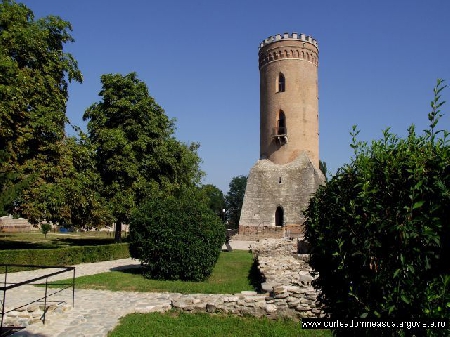Tourist Dambovita
Todays destination is Dambovita County with the city of Targoviste and the mountain region in the north of the county.

România Internațional, 08.08.2013, 14:32
Located at around 80 kilometers from Bucharest, the city of Targoviste lies on the cultural religious tourist routes thanks to its historical landmarks. Worth mentioning here is the fact that during the Middle Ages for nearly three centuries Targoviste used to be Wallachia’s capital. In 1396, when Wallachia’s ruling prince Mircea the Elder moved the capital from Curtea de Arges, Targoviste had already been mentioned in Johannes Schiltberger’s Travel Memoirs.
Shortly after it became a princely seat, Targoviste grew into an important settlement in Central Europe; proof of that is the fact that it was included in all the medieval maps of Europe; also, Targoviste was mentioned in a large number of texts, in old engravings and, more significantly, it was mentioned in documents which can be found in the world’s great libraries and museums.
Targoviste’s greatest attraction is the Princely Court, which is a compound of constructions dating from the 15 and the 16th centuries. The oldest building, with towers whose walls can still be seen today, although partially, was built by Mircea the Elder. The ruling princes following Mircea refurbished his constructions and erected a series of new buildings. For instance, during Vlad the Impaler’s reign, the Chindia Tower was built, for defensive purposes. To this day the Tower dominates the Princely Court in Targoviste. In the late 16th century, ruling prince Petru Cercel erected the Princely Church, lying also within the Court compound.
Dambovita County has benefited from an EU-funded project for the promotion of its tourist potential, in collaboration with the Academy of Economic Studies in Bucharest. Under this project, several natural and cultural destinations were identified, which could become tourist destinations. Moreover, new destinations will emerge, as Ovidiu Carstina, the Director of the Princely Court museum compound told us. The Compound is made up of 13 museums, displaying over 72 thousand heritage items.
Ovidiu Carstina: “With help from the Dambovita County Council, most likely by the end of this year we will open a new museum of archeology, thanks to a donation made by Professor Marin Carciumaru, which consists of over half of the items discovered in Romania’s Paleolithic sites. These are unique artifacts, pieces of jewelry, religious objects, tools and prehistoric weaponry, dating back to 100 thousand years ago. It will be a unique museum in the country, hosted by the town of Targoviste. We would like it to be an interactive exhibition, because, besides the items displayed as such, we will organize various activities. We will hold museum pedagogy workshops, where we will teach children about that period in history, about how people used to build tools or weapons and how they lived back then.”
A similar project will unfold in the aurochs Reserve in Bucsani, located north of Targoviste. This is likely to attract lots of tourists, who will also be invited to participate in various activities meant to introduce them to the Paleolithic and Neolithic ages. The director of the Princely Court Museum Compound, Ovidiu Carstina, has talked about the area’s tourist potential:
Ovidiu Carstina: “Targoviste has a great tourist potential. Besides the Princely Court we have a number of interesting museums such as the Print and Old Romanian Books Museum, where visitors can see a collection of rare, old books. Also worth visiting in Targoviste is the house and workshop of painter Gheorghe Petrascu, the art museum and the town’s monuments. The town boasts 22 churches of which 17, dating back to the 15th century, are on the list of protected monuments. We hope we’ll be able to open to the public the Brancovenesc-style Palace in Potlogi very soon”.
The palace was built in 1698 by the ruler of Wallachia, Constantin Brancoveanu, for his son, Constantin. Another theme tourist route might be connected to Vlad Tepes, one of the 33 rulers of the historical province of Wallachia, whose princely court was in Targoviste. Gabriela Tigu, from the Academy of Economic Studies in Bucharest, gave us a few details:
Gabriela Tigu: “The County Council plans to capitalize on this exciting period in the country’s history and introduce the famous theme of Dracula in the tourist offers of Dambovita County. Of course, most types of cultural tourism in this part of Romania, religious tourism included, have great potential. Mountain tourism has developed over the past few years in the county of Dambovita, and important infrastructure projects are currently under way. Also conducted here are environment protection projects, given that an important part of this area is included in the Bucegi Nature Reserve.”






























